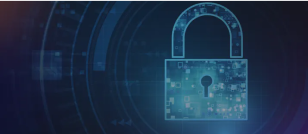Workforce Development for Modern Networking and Cybersecurity Teams
Develop and refine skills for improved organizational resiliency with hands-on training and certifications.





















INE offers a continuous
learn by doing training model
Award winning, hands-on and technically challenging training ensures learners have the in-depth knowledge and skill set to master the subject.
Build a Team Training RoadmapPopular Learning Paths & Courses
Vulnerabilities
8hBGP Fundamentals
8hGetting Started with Azure Cloud
7hBeyond Security+
15hMade for Organizations
Our full-cycle training methodology was created with organizations in mind. INE provides organizations with what they need to develop, upskill, and retain employees in and across cybersecurity and networking roles.
Enterprise and Business SolutionsIntersection of Cybersecurity and NetworkingDevelop skills with immersive, scenario-based practice labs.
INE understands that teaching “how to” under "ideal" conditions stops short of being work-role ready. We place great emphasis on creating scenarios which are as close to real world circumstances as possible to help create a resilient team.
Top News

Advanced Penetration Testing: Evolving Techniques for 2024
Staying ahead of threat actors requires constant adaptation and innovation from cybersecurity professionals. As we move through 2024, the importance of aligning penetration testing techniques with current trends and emerging threats cannot be overstated. This blog explores the latest advancements in pentesting methodologies, the value of up-to-date ethical hacking certifications, and the growing integration of incident response in modern security practices.For both seasoned professionals and those new to the field, understanding these advanced concepts is crucial. The cybersecurity landscape is no longer just about identifying known vulnerabilities; it's about anticipating and simulating sophisticated, multi-vector attacks that mirror real-world threats. By adopting cutting-edge techniques and continuously updating our skillsets, we can better protect organizations from the ever-evolving challenges posed by malicious actors.Let's dive into the world of advanced penetration testing and discover how we can elevate our cybersecurity game to meet the demands of today's threat landscape.
The Evolution of Penetration Testing TechniquesAs cyber threats become more sophisticated, penetration testing methodologies must evolve to keep pace. Here are some advanced techniques gaining prominence in 2024:AI-Assisted Penetration Testing - Artificial Intelligence is revolutionizing the field of penetration testing:Automated vulnerability discoveryIntelligent exploit generationPredictive analysis of potential attack vectorsCloud-Native Penetration Testing - With the widespread adoption of cloud services, specialized techniques have emerged:Container escape testingServerless function analysisMulti-cloud environment assessmentIoT and ICS Penetration Testing - The Internet of Things (IoT) and Industrial Control Systems (ICS) present unique challenges:Protocol-specific testing (e.g., MQTT, Modbus)Firmware analysis and exploitationPhysical security integration with digital testingAdvanced Social Engineering TechniquesHuman factors remain a critical vulnerability in many organizations. Advanced social engineering techniques now incorporate AI-generated phishing campaigns, voice cloning for sophisticated vishing attacks, and even deepfake-based impersonation strategies. Penetration testers must be well-versed in these evolving tactics to effectively simulate and defend against them.
Ethical Hacking Certifications: Validating Your ExpertiseSelecting the appropriate penetration testing certification depends on various factors:Career goals and specialization interestsCurrent skill level and experienceIndustry recognition and employer preferencesTime and financial investment requiredConsider creating a personalized certification roadmap that aligns with your career objectives and the evolving needs of the cybersecurity industry.
Incident Response Integration: A Holistic ApproachA growing trend in the industry is the adoption of Purple Team exercises. These collaborative efforts blend red team (offensive) and blue team (defensive) approaches, creating real-time attack and defense simulations with continuous feedback loops for immediate improvement. This holistic approach not only enhances an organization's security posture but also fosters a culture of ongoing learning and adaptation. This integration offers several benefits:Realistic Attack SimulationsMimics real-world cyber incidentsTests both preventive and reactive security measuresImproved Response Time MetricsMeasures how quickly threats are detected and containedIdentifies bottlenecks in the incident response processEnhanced Communication ChannelsTests notification and escalation proceduresEnsures clear lines of communication during a crisisRegulatory Compliance ValidationVerifies adherence to incident reporting requirementsHelps meet industry-specific compliance standardsContinuous Improvement CycleProvides actionable feedback for both offensive and defensive teamsFacilitates regular updates to incident response playbooksLearn more about incident responseWhat Are Advanced Penetration Testing Techniques?Advanced penetration testing techniques go beyond traditional methods to uncover complex vulnerabilities and simulate sophisticated attacks. Some key characteristics include:Customization and TailoringAdapting techniques to specific target environmentsDeveloping custom exploits for unique vulnerabilitiesEvasion and StealthEmploying advanced obfuscation techniquesMimicking legitimate traffic patterns to avoid detectionChaining and PivotingCombining multiple vulnerabilities for maximum impactLeveraging compromised systems to access deeper network segmentsAutomation and ScalabilityUsing AI and machine learning for intelligent testingDeveloping scripts and tools for efficient, large-scale assessmentsPost-Exploitation FocusEmphasizing lateral movement and privilege escalationAssessing data exfiltration paths and persistence mechanismsExplore advanced penetration testing techniques in-depth
Staying Ahead in the Cybersecurity Arms RaceAs cyber threats continue to evolve, the importance of advanced penetration testing techniques, ethical hacking certifications, and integrated incident response cannot be overstated. By embracing these cutting-edge approaches and continuously updating their skills, cybersecurity professionals can better protect organizations from emerging threats.Remember, the key to success in this field is ongoing education and practical experience. Consider pursuing relevant certifications, participating in hands-on labs, and staying informed about the latest industry trends to maintain your competitive edge in the ever-changing world of cybersecurity. Start your advanced penetration testing journey with INE's comprehensive training programs

Challenges in Penetration Testing Active Directory
Challenges in Penetration Testing Active DirectoryActive Directory (AD) is a cornerstone of IT infrastructure in many organizations, managing user authentication, access rights, and a myriad of other critical functions. Consequently, its security is paramount, making it a prime target for penetration testers and malicious actors alike. Penetration testing Active Directory poses unique challenges that require a deep understanding of its complex environment, specialized skills, and a careful balance to avoid operational disruptions. This blog explores these challenges and offers insights into navigating them effectively.Complexity of Active Directory EnvironmentsOne of the primary challenges in penetration testing Active Directory is the sheer complexity of the environments. Active Directory systems can span multiple domains, forests, and trust relationships, each with its unique configurations and security settings. This complexity is further compounded by the integration with various applications and services, both on-premises and in the cloud.Penetration testers must have a comprehensive understanding of AD architecture to effectively identify and exploit vulnerabilities. This includes knowledge of domain controllers, Group Policy Objects (GPOs), Organizational Units (OUs), and the various protocols AD uses, such as LDAP, Kerberos, and SMB. Without this deep technical expertise, testers may overlook critical vulnerabilities or fail to understand the full impact of their findings.Example The WannaCry ransomware attack of 2017 exploited a vulnerability in unpatched Samba servers, which are often used to connect to Active Directory in Linux environments. This highlights the challenge of maintaining security across complex, interconnected systems (https://en.wikipedia.org/wiki/WannaCry_ransomware_attack).Countermeasure: Implement a segmentation strategy within Active Directory to limit the blast radius of potential attacks. This involves dividing the AD environment into smaller, logical units based on security needs.Countermeasure: Regularly review and document Active Directory configurations to identify and address any inconsistencies or misconfigurations that could create vulnerabilities.Related INE Content:WannaCry Ransomware CVE-2017-0143 (Skill Dive Lab)Specialized Skills RequiredConducting an AD penetration test requires specialized skills that go beyond general penetration testing knowledge. Testers must be proficient in using tools specifically designed for AD environments. Tools like BloodHound, Mimikatz, and PowerView are essential for enumerating AD objects, discovering attack paths, and exploiting vulnerabilities.Moreover, testers must be adept at leveraging these tools without triggering security alerts or causing disruptions. For instance, while Mimikatz is powerful for extracting plaintext passwords and Kerberos tickets, its use can easily be detected by modern endpoint detection and response (EDR) systems. Thus, testers need to employ stealthy techniques and remain aware of the latest detection mechanisms.Example In 2020, attackers used a sophisticated attack chain involving the SolarWinds supply chain compromise to gain access to Active Directory environments. This incident emphasizes the need for penetration testers with expertise in both AD and emerging threats (https://en.wikipedia.org/wiki/SolarWinds).Countermeasure: Invest in training and certification programs for penetration testers to ensure they possess the necessary skills and knowledge for AD testing. Certifications like OSCP with a focus on Active Directory can be valuable.Countermeasure: Utilize automated penetration testing tools designed specifically for AD environments. These tools can streamline tasks like enumeration and vulnerability scanning, allowing testers to focus on more complex activities.Related INE Content:BloodHound Reconnaissance WinRM: MimikatzPowerView: Active Directory EnumerationDetection EvasionEvasion of detection mechanisms is a significant challenge in AD penetration testing. Modern AD environments are often equipped with advanced security tools like Security Information and Event Management (SIEM) systems, Intrusion Detection Systems (IDS), and EDR solutions. These tools are designed to detect and respond to suspicious activities, making it difficult for penetration testers to operate without being detected.Testers must use techniques such as “living off the land” (using built-in Windows tools and commands) to blend in with normal network traffic. They also need to be cautious about the frequency and nature of their actions to avoid triggering alerts. For example, excessive LDAP queries or failed login attempts can quickly raise red flags.Example The APT29 hacking group, known for their meticulous planning, has been documented using custom tools and techniques to bypass detection mechanisms during AD attacks. This illustrates the ongoing battle between penetration testers and security teams (https://www.cybereason.com/resources).Countermeasure: Leverage red teaming exercises to simulate real-world attacks and test the effectiveness of detection and response mechanisms. This helps identify blind spots and refine security controls.Countermeasure: Configure security tools to focus on behavioral analysis rather than just identifying specific attack signatures. This can help detect novel attack techniques that might bypass traditional signature-based detection.Related INE Content:Detecting PsExec with WazuhDetecting Windows Webshells with WazuhDetecting Abnormal Network Connections With WazuhBalancing Thorough Testing and Operational DisruptionOne of the most delicate aspects of AD penetration testing is balancing the thoroughness of the test with the need to avoid operational disruption. AD is integral to the day-to-day operations of an organization; any significant disruption can impact productivity and cause widespread issues.Penetration testers must carefully plan their activities to minimize the risk of causing downtime. This often involves conducting tests during off-peak hours, coordinating with IT staff, and using non-destructive testing methods whenever possible. Additionally, testers should have a clear communication plan in place to quickly address any issues that arise during the test.Example A recent case study describes a penetration test where testers accidentally triggered a lockout policy on a critical domain controller, causing a temporary outage. This emphasizes the importance of clear communication and planning to minimize disruption during AD testing.Countermeasure: Conduct penetration testing during off-peak hours or scheduled maintenance windows to minimize disruption to core business operations.Countermeasure: Utilize non-destructive testing methods whenever possible. This could involve leveraging read-only access or deploying virtual environments for testing purposes.Countermeasure: Establish clear communication channels with IT staff before, during, and after penetration testing to ensure everyone is aware of the testing activities and can respond to any potential issues promptly.Managing Access and PrivilegesGaining and managing access within an AD environment is another challenge. Penetration testers often start with limited access and need to escalate privileges to achieve their objectives. This involves identifying and exploiting misconfigurations, weak passwords, and other vulnerabilities.Privilege escalation must be handled with care to avoid detection and prevent unintended consequences. For example, exploiting a misconfigured service to gain administrative privileges should be done in a way that does not disrupt the service or alert administrators. Testers need to document each step meticulously and ensure that they can revert any changes made during the test.ExamplePassword Spraying: Penetration testers might attempt password spraying attacks to gain initial access using common passwords or leaked credentials from other breaches. This highlights the importance of enforcing strong password policies and multi-factor authentication.Countermeasures:Principle of Least Privilege: Implement the principle of least privilege, granting users only the minimum access permissions they need to perform their jobs. This reduces the potential damage if an account is compromised.Just-in-Time (JIT) Privileging: Utilize Just-in-Time (JIT) provisioning to grant elevated privileges only when needed and for a limited duration. This minimizes the window of opportunity for attackers to exploit privileged accounts.Multi-Factor Authentication (MFA): Enforce multi-factor authentication (MFA) for all privileged accounts to add an extra layer of security beyond passwords.Regular Privilege Reviews: Conduct regular reviews of user privileges to identify and remove any unnecessary access rights that could be exploited by attackers.
Related INE Content:Password Attacks: Password SprayingPassword SprayingPenetration testing Active Directory is a complex and challenging endeavor that requires a high level of expertise, specialized skills, and careful planning. The complexity of AD environments, the need for detection evasion, and the balance between thorough testing and operational disruption are just a few of the hurdles that testers must navigate. Despite these challenges, effective AD penetration testing is crucial for identifying and mitigating vulnerabilities, ultimately strengthening the security posture of the organization. By understanding and addressing these challenges, penetration testers can provide valuable insights that help protect critical AD infrastructure from potential threats.
The Certified Professional Penetration Tester (eCPPT) certification just launched on June 18 with an updated exam to align with the totally updated eCPPT Learning Path. Now through July 15, you can purchase the eCPPT exam or eCPPT + 3 months of Premium training for $100 off.
INE offers Premium training and hands-on labs to help penetration testing professionals stay ahead of the curve when it comes to Active Directory and other security challenges. . Learn more about why INE Security is a leading training and certification provider

Bridging the Gap: Modern Cybersecurity Education
Cybersecurity has become a critical concern for organizations across all sectors. As cyber threats continue to grow in sophistication and frequency, the demand for skilled cybersecurity professionals has skyrocketed. This surge in demand presents both a challenge and an opportunity for higher education institutions tasked with preparing the next generation of cybersecurity experts. To address this pressing need, it's crucial for academic institutions to adapt their cybersecurity education programs to meet the ever-changing requirements of the industry.The Rapidly Evolving Cybersecurity LandscapeThe field of cybersecurity is characterized by its constant state of flux. New technologies emerge at a breakneck pace, threat actors continuously develop novel attack vectors, and industry best practices evolve to keep up with these changes. This dynamic environment creates a significant challenge for higher education institutions striving to maintain up-to-date curricula.Traditional academic approaches have long been the cornerstone of higher education, providing students with a solid foundation of knowledge across various disciplines. These methods, which include carefully curated textbooks and meticulously developed course materials, are the result of rigorous academic processes designed to ensure the highest quality of information. For many fields of study, this approach continues to serve students well.However, the rapidly evolving nature of cybersecurity presents unique challenges to this traditional model. The pace of change in the digital threat landscape often outstrips the rate at which academic materials can be updated through conventional channels. As a result, even the most diligently prepared cybersecurity curricula may struggle to fully reflect the latest developments in the field. This creates an opportunity for higher education institutions to complement their foundational academic approach with dynamic, industry-aligned resources. By integrating regularly updated content from cybersecurity leaders like INE, institutions can ensure their students are exposed to the most current practices and technologies, bridging the gap between academic rigor and real-world relevance in this fast-paced field.The Importance of Practical, Industry-Relevant TrainingTo bridge this gap, it's essential for cybersecurity programs to focus on providing students with practical, hands-on skills that directly align with the demands of the job market. Employers are increasingly seeking candidates who possess not only theoretical knowledge but also the ability to apply that knowledge in real-world scenarios.This shift in focus requires a fundamental change in how cybersecurity education is approached. Instead of relying solely on lectures and theoretical examinations, programs should incorporate hands-on labs, simulated environments, and real-world case studies. These practical elements allow students to develop the critical thinking skills and problem-solving abilities that are crucial in the fast-paced world of cybersecurity.Overcoming the Challenges of Curriculum UpdatesUpdating curricula to keep pace with the rapidly evolving cybersecurity landscape is no small feat. Educational institutions face numerous challenges in this process, including:Limited budgets: Developing and maintaining up-to-date course materials can be costly, especially for institutions with constrained resources.Faculty expertise: It can be challenging for faculty members to stay current with the latest cybersecurity trends while balancing teaching and research responsibilities.Technological constraints: Providing students with access to cutting-edge tools and environments may require significant infrastructure investments.Accreditation requirements: Ensuring that updated curricula still meet accreditation standards can be a complex and time-consuming process.Leveraging INE Resources to Bridge the Curriculum GapOne effective way for higher education institutions to address the challenges of maintaining relevant cybersecurity curricula is by partnering with industry leaders like INE. Offering regularly updated, hands-on content, INE’s learning paths, certification prep, and industry-recognized cybersecurity certifications complement higher education’s theoretical learning.By leveraging INE's resources, educational institutions can ensure that their students have access to the most up-to-date and industry-relevant training materials. This approach allows academic programs to remain agile and responsive to the evolving needs of the industry without placing an undue burden on faculty - and budget - to constantly revise course materials.Want to learn how to prepare cybersecurity students?
Read our latest case study to learn how we partnered with Columbus State University.Fostering Collaboration Between Educators and Industry ExpertsTo truly bridge the gap between academia and industry, it's crucial to foster strong relationships between higher education institutions and cybersecurity leaders. This collaboration ensures that curriculum development reflects the evolving needs of the field and provides a more affordable way for higher ed institutions to implement a hands-on lab environment for comprehensive cybersecurity training.The Future of Cybersecurity EducationIt's vital to have an understanding of what cybersecurity skills are in demand. As we look to the future of cybersecurity education, there are several trends in higher education that are likely to shape the field:Increased focus on emerging technologies: Programs will need to incorporate training on AI, machine learning, IoT security, and quantum computing.Emphasis on soft skills: Communication, leadership, and ethical decision-making will become increasingly important alongside technical skills.Adaptive learning systems: Personalized learning paths will help students focus on areas where they need the most improvement.Gamification and immersive learning: Virtual and augmented reality technologies will provide more engaging and realistic training scenarios.Continuous learning models: Recognition that cybersecurity education doesn't end with graduation, but requires ongoing professional development.INE's resources are well-positioned to support these emerging trends in higher education, offering constantly updated content that covers cutting-edge technologies and methodologies. By partnering with INE, higher education institutions can ensure that their students are prepared not just for today's cybersecurity challenges, but for the evolving landscape of tomorrow.The nature of cybersecurity’s threat and technology evolution presents both challenges and opportunities for higher education institutions. By embracing practical, industry-relevant training, leveraging resources from industry leaders like INE, and fostering collaboration between academia and industry experts, these institutions can develop dynamic, effective cybersecurity programs.These programs will not only meet the current demands of the job market but will also teach you how to prepare cybersecurity students for the future, ensuring a robust pipeline of skilled professionals ready to tackle the complex security challenges of our increasingly digital world.

Code Blue: Strengthening Healthcare Cybersecurity Defenses
Another high-profile healthcare cyber attack is sending shockwaves through the healthcare industry. This time, a Chicago children’s hospital is at the center of a damaging, costly, and life-threatening cyber attack. Few in the industry, if any, are surprised, but there is universal dismay and intense frustration among those charged with keeping infrastructure secure. Dismay over the seemingly endless vector points through which bad actors can target and exploit this industry, and frustration over the continuously stressful pattern of defending what feels indefensible. Worldwide, healthcare remains the number one industry targeted by cyber attackers, with 173 attacks in 2023 costing an average of $10 million each, according to data compiled by INE Security cybersecurity instructor Alexis Ahmed. More than 365 million records were compromised during that time, a 22% increase over the prior year, and only a portion of the more than 1.2 billion records exposed in all corporate attacks.In the face of unprecedented challenges and an endless onslaught of healthcare cybersecurity attacks, we sat down with INE Security’s Defensive Security Instructor Brian Olliff to talk about healthcare cybersecurity solutions. Brian spent nearly a decade working as a cybersecurity analyst and manager for a large South Carolina-based healthcare organization. He has had a front-row seat to the growing cybersecurity challenges faced by the healthcare industry and is passionate about strengthening cyber defense training for this critical industry. How vulnerable is the healthcare industry right now compared to other industries?When it comes to cybersecurity for hospitals and healthcare facilities, the iron will always be hot. That’s to say, attacks have been bad, but they are getting worse. There are more of them, they are getting more expensive, and in some cases actually costing lives, which is obviously the absolute worst-case scenario.Why is healthcare such a hot target?The high-stakes dynamic means healthcare organizations have little room to negotiate or risk wasting valuable time by refusing to cooperate. The urgency of keeping everything online and functioning makes healthcare infrastructure particularly vulnerable. With hospitals and other healthcare operations, you aren’t just talking about money, lost revenue, or lost business, you’re talking about lost lives. Unfortunately, the majority of attackers have more resources and more time than defenders do, so that leaves an uneven and vulnerable playing field, giving attackers the upper hand.
What is standing in the way of healthcare organizations being more secure and able to defend themselves?Budgets are tight, and regulations are not stringent enough. A lot of businesses, healthcare included, will take the approach that paying the ransom or paying the fines is cheaper than investing in the technology to defend against them. You can understand how they would get there; the attacks are sophisticated and come in from a lot of different vectors. However, mitigation and prevention of these attacks can, in reality, be diminished with efficient and appropriate use of budget – creating a strong defense even with a small budget.
How should healthcare organizations prioritize their budgets? First, I’ll say cybersecurity training, from front to back offices, is crucial in the effort to prevent and defend against bad actors looking to exploit healthcare organizations. Data shows, and I sincerely believe, that training is the number one way organizations can stand up a strong defense against cybersecurity attacks. Training is critical. Obviously, ongoing cybersecurity training within the IT team is really important to ensure the entire team understands the newest technologies and threats and has constant real-world practice so that when an attack hits it is almost just muscle memory.
Beyond that, user education and user training is one of the least expensive and most effective ways to set up a first line of defense for cybersecurity breaches. Social engineering is one of the simplest ways for attackers to access systems. You’ve got phishing attacks through email, where attackers will try to get users to click on links in an email that will lead users to a fake landing page. Most of these pages look very legitimate, so it's difficult for even experts to tell the difference sometimes, and without some type of training, users will just give up their username and password without realizing it. By implementing a robust training program for employees, you can help them recognize what a suspicious email looks like, and when to raise a red flag. Then you provide them an easy, frictionless way to report that suspicious message so a security professional can then look at it. A lot of companies do annual security awareness training to meet compliance requirements, and the reality is that is simply not enough – not by a long shot. This is why cybercrime works. Second, make sure whatever budget you have is being used efficiently. This will look different for each organization. But a lot of companies are using cloud providers and cloud-hosted resources. They want to make sure those are properly configured and have the right controls, settings, and permissions in place, then verify that those controls are effective, either through audits or pentests. Configuring it correctly is only half the battle - you have to verify that it is actually effective. Minimizing the extent of publicly-hosted systems or applications is another big one. This is more challenging with so many remote workers now, but still important. Implementing multi-factor authentication into the systems is an additional layer of security. There are ways to trick users into giving up the token codes, and unfortunately, this happens more than it should. But it’s the combination of these security tactics that become layers upon layers of solid defense, and you count on that to protect you.
ConclusionThe dynamic nature of cyber threats requires continuous vigilance, particularly within the healthcare industry, where the stakes have never been higher. Combining proper cybersecurity training, efficiently allocated resources, and layered security measures across the organization are critical to combatting threats.Download our whitepaper “A Strong Defense for Training Security Teams” to learn more about how advanced training programs can equip providers to safeguard data amid threats. Interested in learning more about how INE Security can offer solutions to your team? Connect with our team to see firsthand how INE’s immersive cyber training will empower your organization with job-ready skills to implement protections in a strained threat landscape.

Capture the Flag for Empowered Cybersecurity Training
In January 2024, JPMorgan Chase’s CEO revealed that the asset and wealth management company fends off 45 billion cyber attack attempts per day. While most organizations won’t have to combat the same level of attack as a leader in the financial industry, global cyber crime damages are predicted to grow 15% YoY, topping $10 trillion by 2025. Cybersecurity preparedness has become a top priority as businesses strive to protect their sensitive data and maintain the trust of their customers.Organizations are now looking for ways to keep their teams more engaged in the training that helps them stay prepared for emerging cybersecurity events and trends. INE is excited to announce CTF Arena - free Capture the Flag challenges that put security professionals to the test in real world scenarios. Monthly challenges are a fun, competitive way to supplement training and spark some excitement in teams that are prone to burnout. Why Should Your Team Participate in CTFs?Cyber attacks are relentless. Teams are burnt out. Who has the time to add more training? The short answer is no one. There will never be enough hours in the day for a dedicated cybersecurity professional to accomplish everything they want and need to do. But training is never going to be optional - so it might as well be fun!
Capture the Flag challenges are typically modeled after a real-world scenario or cyber attack that happened, and give cybersecurity professionals a risk-free environment to work through how they would stop the attack. Since most CTFs (like ours) offer prizes for top performers and Easter Eggs for extra prizes, it’s an easy way to incentivize your team to get involved. Other benefits include:Skill Development: Participants get hands-on practice identifying and mitigating security vulnerabilities in a cyber attack simulation to stay ahead of emerging threats and improve their overall cybersecurity knowledge.Team Building: CTF challenges encourage teams to work together to solve complex challenges, improving effective collaboration and communication. This collaborative spirit translates well into the workplace, fostering a stronger team dynamic. In a field where teamwork is crucial, CTF challenges can help employees build trust and cohesion, ultimately benefiting the organization's overall cybersecurity strategy.Identifying Weaknesses: Organizations can use CTF challenges as a proactive approach to identify weaknesses in their cybersecurity infrastructure. By observing how Red Teams tackle challenges, cybersecurity teams can gain insights into potential gaps or areas that may need improvement. This proactive approach enables organizations to address vulnerabilities before they can be exploited by malicious actors, enhancing the overall security posture.Continuous Learning: If you hear every day that continuous training is imperative, that’s because it is! The speed at which new threats emerge has increased since AI tools have become widely available. INE offers new CTF challenges monthly to align with emerging threats. We also offer training for individuals and teams across Cybersecurity, Networking, and Cloud and at every skill level to engage technology professionals regularly in hands-on training. Motivation and Engagement: The competitive and gamified nature of CTF challenges makes learning fun and engaging. When employees are motivated to improve their skills, they are more likely to stay committed to maintaining a high level of cybersecurity awareness in their daily work, benefiting the organization as a whole.See the LIVE Challenge Board here!Notify Me When The Challenge Opens
Organizations can greatly benefit from encouraging their employees to participate in cybersecurity Capture the Flag challenges. From skill development and team building to identifying weaknesses and promoting continuous learning, the positive impact on the overall security posture is significant. Embracing CTF challenges not only enhances the capabilities of individual employees but also contributes to building a resilient and proactive cybersecurity culture within the organization. Want to learn more about how to engage cyber teams in hands-on training? Schedule a demo!

Why INE? Because We Check All of the Boxes
When it comes to online IT/IS training, we know that there’s no shortage of options. It can be daunting to make a decision, but we’ve found that most learners are looking to check similar boxes when it comes to needs:Do they offer the topics I want to learn?Is it available when I want to learn?Do they teach in a way that meets my learning needs?Can I afford the courses?Sure, there might be other factors in play, but these are the necessities. How does INE ensure we’re checking these boxes to make the choice easy for you? Read on.Does INE cover the topics I want to learn?INE started out with a networking focus 20 years ago - but we’ve grown into an IT/IS training platform that offers courses and certifications across:Networking, Cybersecurity, and Cloud Computing. We create learning paths and certifications at every proficiency level that can help individuals and teams develop from novice to expert. And as technical areas converge, the need for the intersection becomes more important, like network security and cloud security - we know because we use industry SMEs to keep up with organizational and career needs. Our current partners stick with us because we stay aligned with popular vendors as they update their technologies and certifications. For example, Cisco’s current roadmap has major updates to nearly all of their certifications over the next 18 months. INE is in the process of updating all of our Cisco exam prep learning paths in lock step with their updates. More announcements on those updates are coming soon!
Are INE learning paths and certifications available when I am ready to learn?Recently, we asked our community the biggest barriers to training and the single biggest identified challenge for professional continuing education is finding time to invest in themselves.INE offers on-demand training through instructor-led courses, labs, and hands-on practical work on a platform to provide asynchronous learning that’s ready for you when you can get to it.
Will I retain the information I learn in INE courses?Hands-on, practical learning is key to retention - which you can read all about in this blog. INE acquired Pentester Academy and Cloudskills.io to incorporate their labs into our learning paths and certifications for stronger learning experiences. With more than 3,100 browser-based labs in networking, cybersecurity, and cloud, our students can put their learned skills to practice before they take it back to real-world environments. Take our labs for a test drive with Lab Demo - no credit card required.
Can I afford the courses?Our Subscription model makes learning affordable for nearly any individual learner or organization. Are you an IT or HR leader looking for Training for Teams? We’ve got you covered. Contact us today to schedule a demo.Check out these subscriptions for individual learners:Fundamentals Monthly at $59/monthlyFundamentals Annual at $299/yearPremium at $749/yearPremium+ at $899/yearAnd just to make it even more affordable, we often run promotions to make sure that everyone that wants to learn with us, CAN learn with us. Sign-up for our mailing list so that you won’t miss a thing.
Looking to save now? Summer savings is in full swing, now through August 10, 2023, with:$100 off on eLearnSecurity certifications$100 off on Junior Penetration Tester + 3 months of Fundamentals (eJPT + 3) $100 off on Enterprise Defense Administrator + 3 months of Premium (eEDA + 3)Take $100 off ANY eLearnSecurity Certification - Use coupon code elsJULY23100ORSave $100 on eJPT + 3 or eEDA + 3 - Use coupon code CyberJULY23100
Small Print:$100.00 off eLearnSecurity Certification Vouchers, code elsJULY23100, is only valid through August 10, 2023.Offer valid on new eLearnSecurity exam vouchers, we reserve the right to change this offer at any time.Once purchased, the eLearnSecurity certification exam voucher will be in your account and available to attempt for 180 days. You will have two attempts to pass the certification exam.eJPT + 3 months of Fundamentals will renew quarterly at $117 following the 3-month period after purchase for $249eEDA can be purchased at discounted rate as standalone with existing Premium Subscription or HighereEDA + 3 months of Premium will renew after 3 months at $350, then $749 annually from purchase dateTHESE CERTIFICATION ARE RETIRING and the exam MUST be TAKEN prior to October 1, 2023: CPTXv2, eCMAP, eCXD, eCRE, eWDP. Note for Existing Subscribers: Premium subscribers (or higher) can purchase the Enterprise Defense Administration Voucher or the Junior Penetration Tester Voucher on its own and save $100 with coupon code elsJULY23100.
Globally Trusted Workforce Development and Industry Certifications
/ LET’S GET IN TOUCH
Have a question? We’re here to help!
Whether you’d like more information on our training materials or are interested in a free demo, please contact us at any time.
Monday - Friday8:00 AM - 5:00 PM Eastern Time
US Customer1-877-224-8987
Outside US+1-984-444-9917
Sales Emailinfo@ine.com
Support Emailsupport@ine.com
